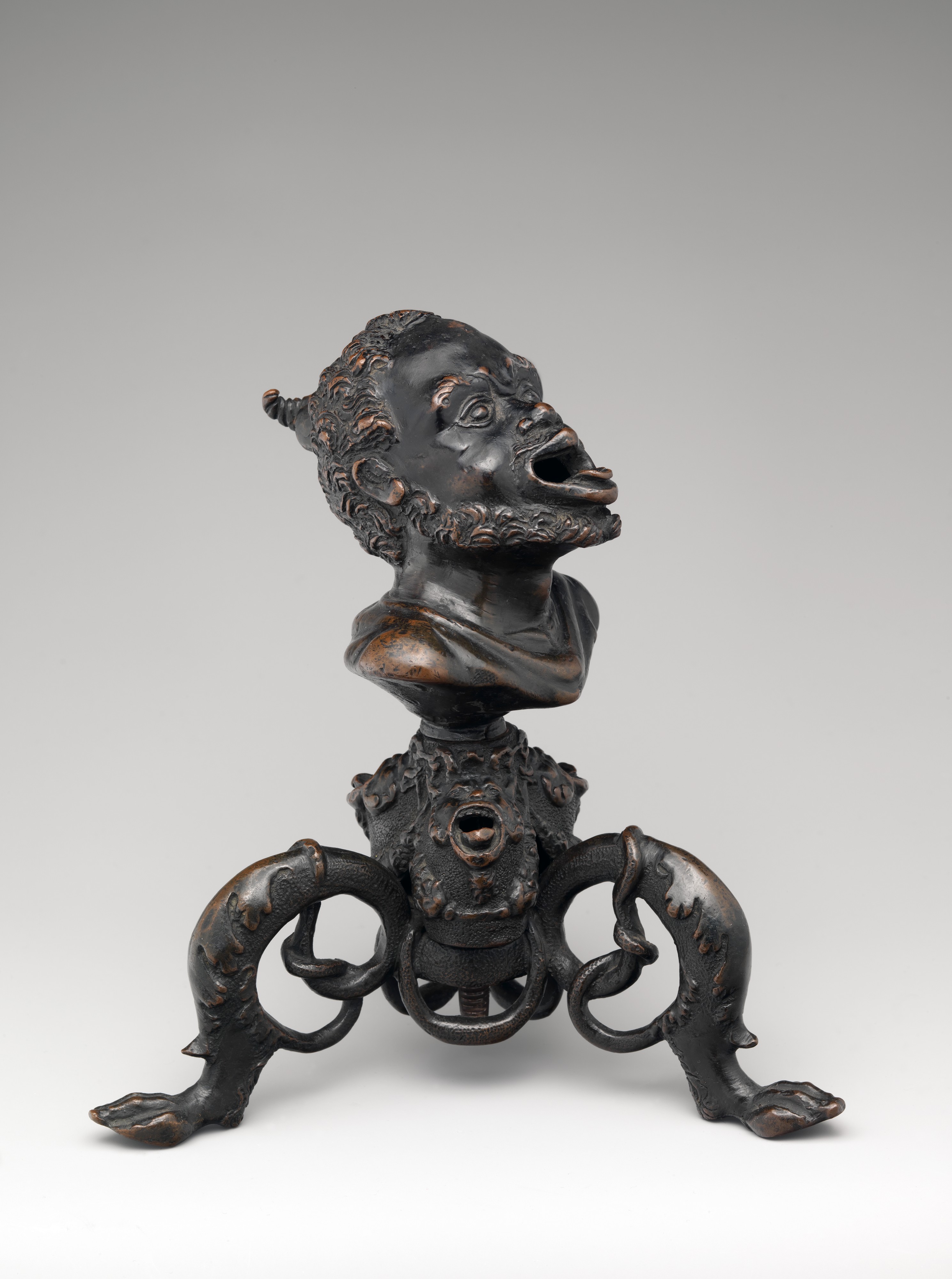Oil lamp based on the form of an African’s head
Manner of Andrea Briosco, called Riccio Italian
Not on view
This lamp is a composite of multiple parts. A small vessel in the shape of a horned, open-mouthed bust sits atop a base, the protruding tongue serving as a runnel for the wick. Support comes from three cloven legs, which are wrapped in acanthus leaves and vines. These converge at a central stand, where three monstrous faces bedecked with festoons offer a chorus of silent screams. Despite the echoes between such faces’ gaping mouths and that of the lamp, the vessel and base were conceived separately, joined later with a screw.
The vessel represents a design widespread during the Renaissance, with numerous extant versions in museums worldwide.[1] It is a particular variant on a wider array of bronze lamps styled on imagery of Black Africans.[2] Such lamps derived from ancient prototypes and relate to a broader history of antique vessels shaped as heads of Black Africans.[3] Renaissance lamps of this type approached their subjects in a dehumanizing fashion, exaggerating facial features and adding horns and foliage, attributes typical of satyrs.[4] Such lamps were rooted in the treatment of race in the Renaissance and speak to the extensive, vile stereotyping of Black Africans during the period.[5] The Veneto, where this bronze was produced, notably achieved wealth through the commerce and ownership of slaves, including from sub-Saharan Africa.[6]
-RC
Footnotes
(For key to shortened references see bibliography in Allen, Italian Renaissance and Baroque Bronzes in The Metropolitan Museum of Art. NY: The Metropolitan Museum of Art, 2022.)
1. See, for example, Bode-Museum, 7302; Museo Civico Medievale, Bologna, 1410; Louvre, OA 2800.
2. The Met’s bronze is listed among a subset of such lamps grouped by shared design in De Winter 1986, p. 137 n. 74.
3. Boucher 1970, pp. 245–49; Spicer 2012, p. 11. For examples of such ancient vessels, see Snowden 1970, pp. 27–28.
4. See, e.g., Beck and Bol 1985, pp. 501–3.
5. Lowe 2005.
6. Lowe 2013 (with further bibliography); on the intersections of slavery and race in premodern Italy, see Epstein 2001.
Due to rights restrictions, this image cannot be enlarged, viewed at full screen, or downloaded.
This artwork is meant to be viewed from right to left. Scroll left to view more.



